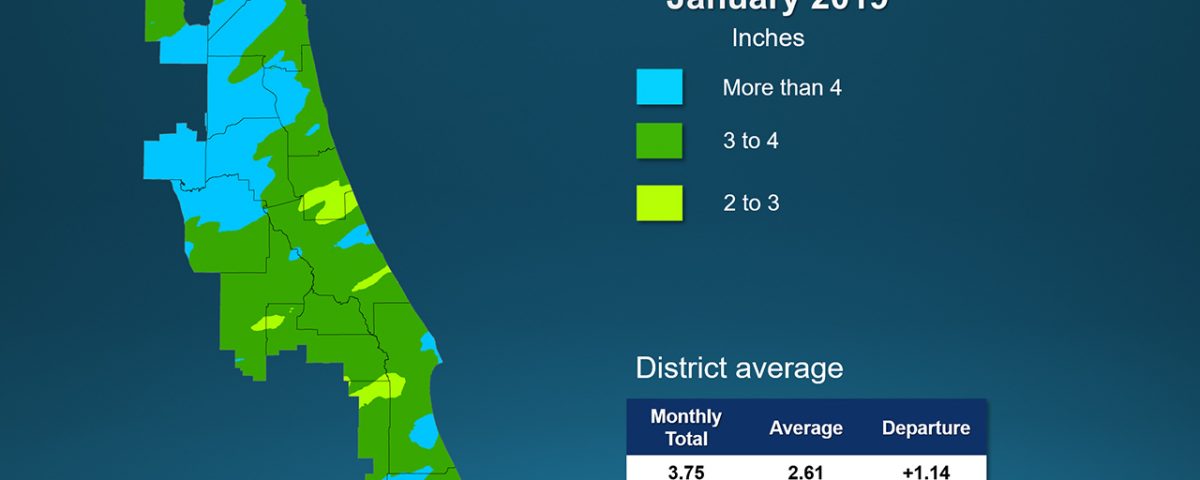Above-average January rainfall recorded Districtwide

A map illustrates rainfall conditions in January 2019 Districtwide.
ORLANDO, Fla., Feb. 12, 2019 — Rainfall during January 2019 was above average across the 18 counties of the St. Johns River Water Management District. A full report outlining hydrological conditions was presented at the District’s February Governing Board meeting, held offsite today at the University of Central Florida.
According to District data, even the southernmost counties, which are currently experiencing drought conditions, recorded an increase in rainfall. With this rainfall, surface water flow conditions in the Upper St. Johns River Basin briefly rebounded slightly from the extremely low flow conditions in December.
Twelve-month rainfall totals continue to show the effects of the prolonged below-average rainfall in the southern portion of the District and the prolonged above-average rainfall in the central region. For example,12-month rainfall totals in Marion, Alachua and Putnam counties show greater than 60 inches of rainfall, while Indian River and Brevard counties recorded less than 45 inches.
Other highlights from the hydrologic conditions report for January 2019 are:
- Lake levels across the District increased, including a slight increase in Blue Cypress Lake in the upper basin; however Blue Cypress remains below both the long-term average and the regulation schedule level. In Clay County, Lake Brooklyn water levels increased nearly a foot during January.
- Flow in the central Florida tributaries to the St. Johns River (the Econlockhatchee, Wekiva and Ocklawaha rivers) remained very high throughout the month, as did flow in the St. Marys River.
- Upper Floridan aquifer conditions (groundwater levels) were in the high range in the north and western portions of the District, and in the normal range elsewhere.
- Spring flows across the District remained in the normal range, except for Volusia Blue, which had daily flows in the high range for most of January, and Silver Springs, which also showed an increase.


